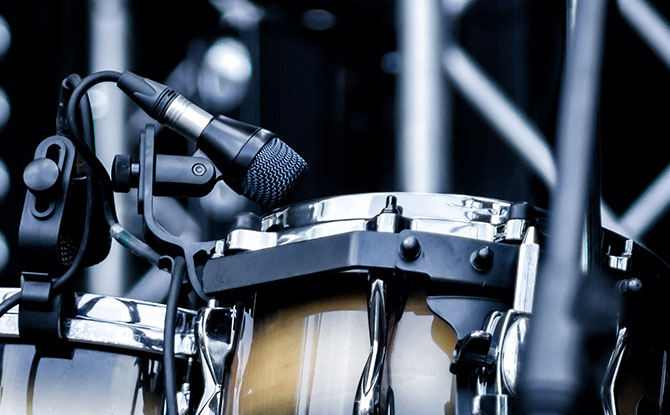Dynamic microphones are very versatile. They can be used for a wide variety of applications, whether it is as a vocal microphone or used to pick up instruments. We look at some examples of dynamic microphones and their applications.
Dynamic microphones characteristics
A good dynamic microphone will have a number of key characteristics. They can act as good general purpose microphones for a variety of uses.
When choosing a dynamic microphone, some of the things that you should look out for include whether it has a good frequency response, meaning whether it can accurately reproduce a wide range of audio frequencies.
Next, a good dynamic microphone should have a decent sensitivity so that can capture even quiet sounds clearly.
Thirdly, it should have a low self-noise, meaning that it doesn’t introduce unwanted noise into the signal. Related to this, when choosing a dynamic microphone, look for one that has a good built-in shock mount. This will isolate it from handling noise, in other words, the it reduces the handling noise from the user holding on to it.
Lastly, it should have a robust construction that can withstand typical use and abuse, such as being dropped or bumped around.
Examples of dynamic microphones and their applications

Here are some examples of commonly used dynamic microphones and the applications that they are used for.
| Brand | Model | Application |
|---|---|---|
| Shure | SM58 | Vocals |
| Shure | SM57 | Instruments/ Drums / Guitar Amps |
| Shure | Beta 52A | Bass Drums/Instruments |
| Shure | SM7B | Vocals, podcasting, streaming, speech, Voice-over |
| Sennheiser | e935 | Vocals |
| AKG | P3 S | Vocals |
| AKG | D5 | Vocals |
| Sennheiser | e602 | Kick Drums/Bass Amps |
Please note that this is not an exhaustive list and there are many other dynamic microphones available from different brands. These are just some of the most popular and widely used microphones in their category, but there are other models from these brands that are also highly regarded in the industry as well.

Finally, take note that the application of the microphone will also vary depending on the user and the environment.
See some common examples of condenser microphones.

